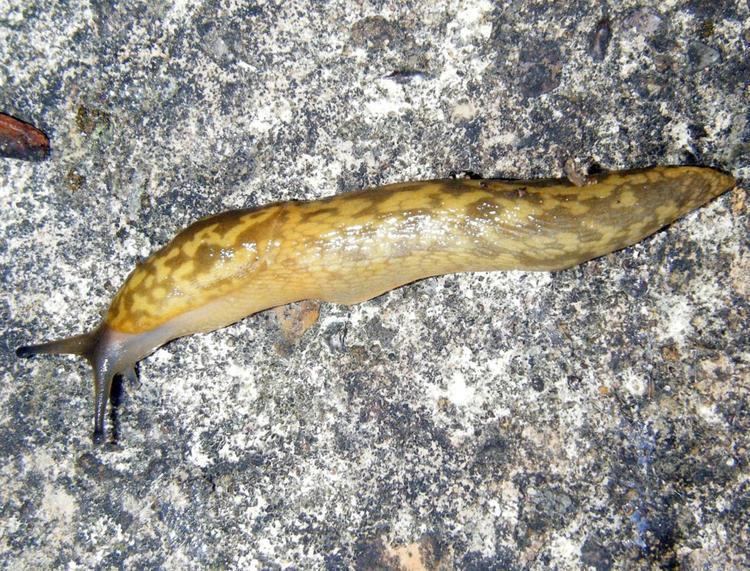Kingdom Animalia Family Limacidae Genus Limax Scientific name Limax flavus Higher classification Limax | Superfamily Limacoidea Subfamily Limacinae Subgenus Limacus Phylum Mollusca Rank Species | |
 | ||
Similar Gastropods, Limax, Molluscs, Limacidae, Limax maximus | ||
Limax flavus (syn. Limacus flavus), known commonly as the cellar slug, the yellow slug, or the tawny garden slug, is a medium to large species of air-breathing land slug, a terrestrial pulmonate gastropod mollusk in the family Limacidae.
Contents

Yellow slug limax flavus
Description

This slug has a yellow body with grey mottling, and pale blue tentacles. When extended, the body length can be 7.5 to 10 cm (3.0 to 3.9 in).
Distribution

The yellow slug is common in Scotland, England, Wales and Ireland as well as most of southern and western Europe. It has been accidentally introduced in many other parts of the world.
Behavior

Yellow slugs, like the majority of other land slugs, use two pairs of tentacles on their heads to sense their environment. The upper pair, called optical tentacles, is used to sense light. The lower pair, oral tentacles, provide the slug's sense of smell. Both pairs can retract and extend themselves to avoid hazards, and, if lost to an accident or predation, can be regrown.
Like all slugs, the yellow slug moves relatively slowly, gliding along using a series of muscular contractions on the underside of its foot, which is lubricated with mucus, such that it leaves a slime trail behind it.
Ecology
This species feeds mostly on fungi, decaying matter, and vegetables.
Habitat
This species is strongly associated with human habitation, and is usually found in damp areas such as cellars, kitchens, and gardens. Generally speaking it is only seen at night, because it is nocturnal. Thus often it goes unnoticed and people are unaware of how (relatively) common the species is.
Parasites
Parasites of Limax flavus include the nematode Angiostoma spiridonovi.
